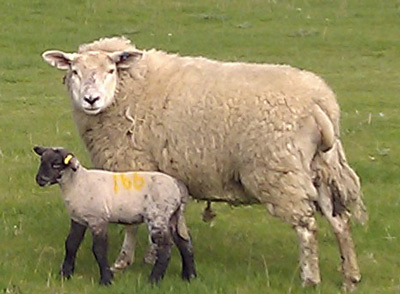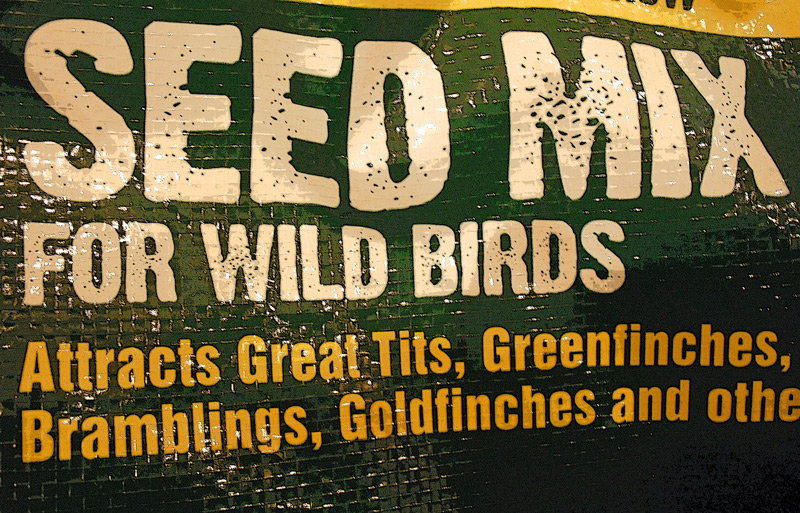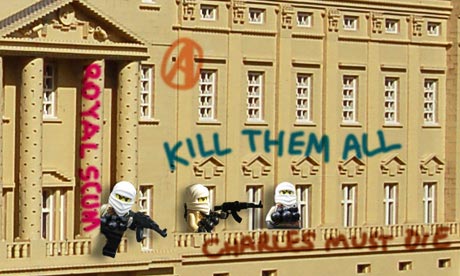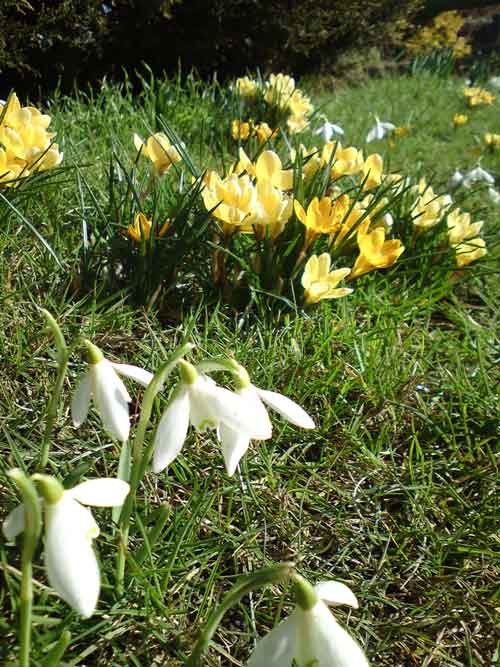Here’s a photo of a sheep…

…and a lamb which must have been a day or two old. I took this about three minutes into a run earlier in the week. The land use around here is a varied mixture of livestock, lots of horses, sheep, cattle and a few goats and pigs and arable, mainly wheat but there’s an absolutely massive field — about 3/4 mile by 1/4 mile — very close which has been sown with oilseed rape this year and will soon be a block of bright yellow that I imagine will also waft a pungent smell for a couple of weeks.
It’s fascinating to observe the rhythm of the seasons in events like lambing and it’s something I want to do in the novel — both literally and metaphorically in terms of the plot — decay and rebirth and so on. It’s been re-assuring, after the persistent snow and extremely low temperatures in December — I calculated about -15C at least in my garden — that hibernating wildlife seems not to have been affected. I’ve seen plenty of bumblebees and loads of ladybirds.
I get BBC Countryfile magazine and the new issue comes with a ‘free CD of British birdsong’. I guess there’s a trainspotter aspect involved — learning the individual songs of each bird if you can really be that diligent — but I imagine that the people who will play it most are those who don’t get the benefit of natural birdsong. (Before Classic FM was launched the engineering test transmissions played birdsong, which proved very popular with listeners.)
Fortunately I haven’t dashed to play my CD as the birdsong in the garden is at its seasonal peak — with the birds busy pairing off and making nests. We’ve got a few resident blackbirds who sing most beautifully perched on the tops of trees, especially at dawn and dusk. It makes me realise one of the best investments I’ve made in a long time was a 16kg bag of bird seed which saw us through most of the winter and has meant the residency of countless sparrows, finches, blackbirds, robins, starlings has continued. But I’m not sure it’s delivered on the promise of the first species on the sack, I’ve not had the pleasure of seeing those in the garden in the winter, more’s the pity.

Another joy of spring in the non-natural world is the April Fool. I was a bit remiss myself as I’ve enjoyed doing a few spoofs myself in the past — all I could do is post a very unconvincing status update on Facebook at 11.55am. Maybe it’s because of the recession but there were a lot of amusing hoaxes this year — there’s a round up here.

The Guardian has done some good April Fools in the past and this year it tried to convince its readers that it had changed position to wholeheartedly support the royal wedding. If you accepted this unlikely reversal of its stance then there were some very amusing stories on a supposed live wedding blog. My favourite was the desecration of the Legoland model of Buckingham Palace — a suspected trial run in miniature for the big day (see photo below linked to Guardian website).
Best of all — and my favourite for a long time — was the spoof Ken Bruce show on Radio Two. Like all the best hoaxes, and the sort of humour I like in general, this was done with such a light touch that it might just possibly have been serious.
I turned on in the car mid-way through the show and thought ‘this isn’t Ken Bruce, I wonder who’s sitting in’. But the lightly-accented Scottish voice claimed he was Ken Bruce. I twigged fairly quickly, especially after ‘Ken’ completed a whole link by burbling gibberish, that this was an April Fool and tried to identify who was the impersonator. Many other people took it literally and complained that it was Ken Bruce himself having his own joke — or that he was even drunk (which isn’t too far fetched given the rumours about another recently departed Radio Two presenter).
I nailed it as Rob Brydon fairly quickly — although the fact he’s on just about everything anyway helped narrow down the odds. His impression of a lecherous, incoherent egotist was so spot on that I felt a bit sorry at the end when the real Ken came on as he’d been so thoroughly skewered. (From a personal note I used to work for someone with a very similar drawl to this ‘Ken Bruce’ and he was also an occasionally lecherous, alternate monstrous egomaniac and paranoid neurotic so I did particularly enjoy Rob Brydon’s creation).
I’ve listened to the first half hour on the iPlayer — and I’ll try and listen to the whole thing again as it’s so funny.  There was perhaps a bit too much smutty innuendo for my liking — not because I’m prudish about these things (as some blog postings will attest) but because remarks about knobs are a bit lazy, like shock swearing, for a comedian to resort to — thankfully I didn’t hear any puns about garden birds and female anatomy.
But there were some inspired moments — particularly when the other presenters were trying to be serious. Hearing ‘Ken’ saying that Jeremy Vine had come in to ‘bore us all to death’ was priceless but I think my James might have been shaking the radio in rage.

